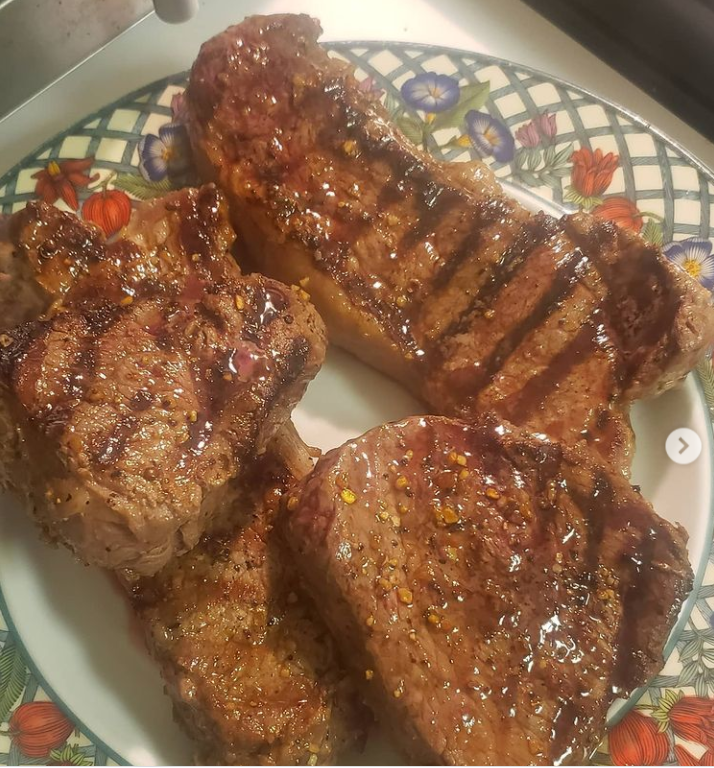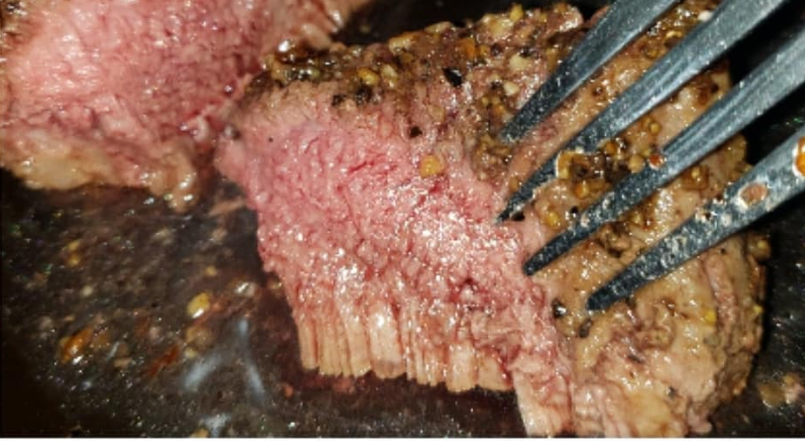
You guys see LOTS of posts each week on my meals. You see tons of steak, chicken, and even hot dogs and pork BBQ. I always tag that its GRASS FED GRASS FINISHED. Everyone messages me and asks what the differences are and if its worth the cost.
I wanted to piece together info on why GRASS FED GRASS FINISHED is always my goto when I make food at home for SWOL KITCHEN. https://www.instagram.com/flexxn13/
Red meat of any kind is a healthy choice, and doesn’t deserve the bad reputation that it’s given by the media and mainstream medical establishment. And it is CERTAINLY a better choice then Impossible Burgers or the fake plant based beef that is out there and pushed so hard now by the media and celebrities, and Bill Gates. But although conventional beef won’t give you cancer and is an important source of highly bioavailable nutrients, we can’t ignore the fact that grass-fed meat is still superior to grain-fed.
The classic saying “you are what you eat” applies just as well to cows as it does to humans, and there are some pretty significant differences in the quality of red meat based on how the animal was fed.
LOTS of beef say GRASS FED. This just mean the cow ate, ate SOME point in their lives, GRASS. Don’t waste the extra money on this label. Look for GRASS FED GRASS FINISHED, meaning the animal ate grass for their entire lives.
An AMAZING study in the NUTRITION JOURNAL “A review of fatty acid profiles and antioxidant content in grass-fed and grain-fed beef” shows from a scientific level WHY you want to go with GRASS FED AND FINISHED when possible, as does a great article from chriskresser.com
Fatty Acid Composition
The ratio of saturated to monounsaturated to polyunsaturated fat in beef stays about the same regardless of what the animal is fed. Those ratios might shift slightly depending on the animal’s diet, but the shifts are still relatively small. On average, grass-fed beef tends to have slightly lower levels of MUFA and slightly higher levels of PUFA than grain-fed, but these differences are at most five percentage points, depending on the breed of cattle and the study in question. So regardless of whether your beef is grain-fed or grass-fed, you’ll be getting about 40-50% saturated fat, about 40-50% monounsaturated fat, and somewhere near 10% polyunsaturated fat.
However, the diet of the cow does significantly influence the types of each fat present. Within the broad categories of SFA, MUFA, and PUFA, there are several individual fatty acids with different chemical compositions, and each has unique effects on the body.
Omega-3 and Omega-6
The two fatty acids you’re probably most familiar with are our old friends omega-3 and omega-6, both of which are PUFAs. This might come as a surprise, but the most current research indicates that beef contains consistent levels of omega-6 regardless of diet. This is good news if you can’t afford grass-fed beef, because at least grain-fed beef won’t give you more Omega 6 than you can compensate for. What you’ll be missing out on are the significantly higher levels of omega-3s found in grass-fed beef. (3) Depending on the breed of cow, grass-fed beef contains between 2 and 5 times more omega-3s than grain-fed beef, and the average ratio of n-6:n-3 in grass fed beef is 1.53:1. In grain fed beef, this ratio jumps all the way up to 7.65:1.
Saturated Fat
Although despite what we have been told, you don’t have to stress about saturated fat of any kind, it’s worth noting the differences in SFA composition of grain-fed vs. grass-fed meat. There are three main types of saturated fat found in red meat: stearic acid, palmitic acid, and myristic acid. Grass-fed beef consistently contains a higher proportion of stearic acid, which even the mainstream scientific community acknowledges does not raise blood cholesterol levels. This higher proportion of stearic acid means that grass-fed beef also contains lower proportions of palmitic and myristic acid, which are more likely to raise cholesterol.
Conjugated Linoleic Acid
Conjugated linoleic acid (CLA) is a type of PUFA that is found naturally in milk and meat products, primarily from ruminants such as cows or sheep. CLA exhibits potent antioxidant activity, and research indicates that CLA might be protective against heart disease, diabetes, and cancer. Beef is one of the best dietary sources of CLA, and grass-fed beef contains an average of 2 to 3 times more CLA than grain-fed beef. This is because grain-based diets reduce the pH of the digestive system in ruminant animals, which inhibits the growth of the bacterium that produces CLA. It’s interesting to note that as a whole, Americans consume far less CLA than people from countries such as Australia, where grass-fed beef tends to be the rule rather than the exception.
Antioxidants, Vitamins and Minerals
Another reason grass-fed meat surpasses grain-fed is that it contains considerably more antioxidants, vitamins, and minerals. Carotenoids, such as beta-carotene, are precursors to vitamin A that are found as pigments in plants. Grain-fed beef does not contain appreciable levels of carotenoids, for the simple reason that grains don’t contain them. However, cows that eat carotenoid-rich grass and forage incorporate significant amounts of these compounds into their tissues. These carotenoids make the fat from grass-fed beef more yellow than the fat from grain-fed beef, so fat color can be a good indicator of how nutrient-rich your meat is.
Grass-fed beef also contains significantly more of the antioxidants vitamin E, glutathione, ( if you do not take a liposomal glutahione supplement, I HIGHLY recommend you do, especially for the immune system and inflammation) and catalase than grain-fed beef. These antioxidants play an important role in protecting our cells from oxidation, especially delicate fats in the cell membrane such as omega-3 and omega-6.
Antioxidants such as vitamin E and beta-carotene also work together synergistically to protect the meat itself from damage during the journey from butcher to plate. These antioxidants are especially important if you choose to fry or grill your meat, because those high-heat cooking methods can be more damaging to meat than wet or low-heat methods such as stewing or braising.
Grass-fed beef also contains higher levels of the beneficial nutrients including zinc, iron, phosphorus, sodium, and potassium. It’s safe to say that grass-fed meat gives you more bang for your buck on all fronts, with its significantly higher levels of omega-3s, antioxidants, minerals, and other important nutrients.
Other Types of Red Meat
The benefits of grass fed grass finished red meat extend to other animals as well. For example, several studies show that the meat and milk of grass-fed lambs is significantly higher in omega-3 fatty acids and conjugated linoleic acid than the meat and milk of grain-fed lambs. Another study shows that the fatty acid composition of grass-fed bison is similar to that of grass-fed beef, and both contain higher levels of omega-3s and CLA than that of grain-fed bison.
I hope it’s clear by now that when it comes to red meat, quality makes a big difference. However, price is a common concern, and not everyone can afford grass-fed meat all the time. Grain fed red meat is still a healthy choice. Just remember that grass-fed red meat is more nutrient dense than grain-fed, so even though grass-fed grass finished is more expensive, you’re getting more nutritional bang for your buck. I buy BUTCHERBOX. Use this link for a $30 discount off your first box!!!! http://fbuy.me/qII1O They have fantastic monthly subscriptions on steaks, chicken, hot dogs, pork, and so much more!!! Literally the BEST STEAKS I have ever tried.

